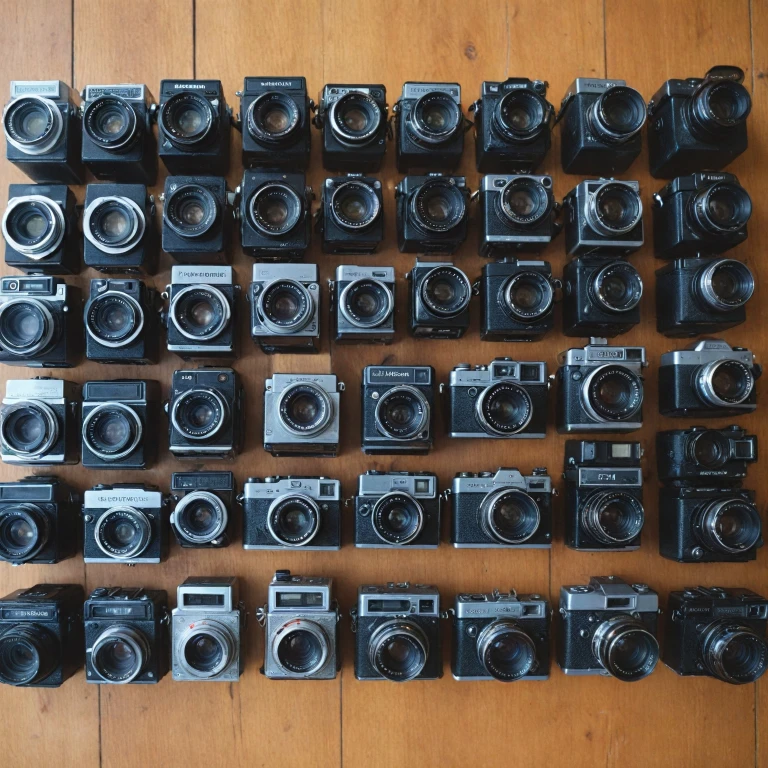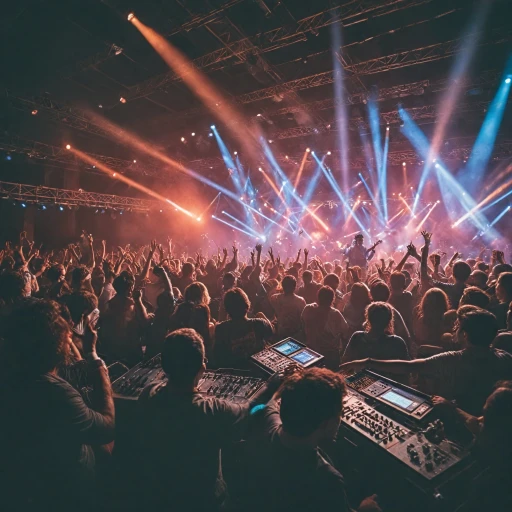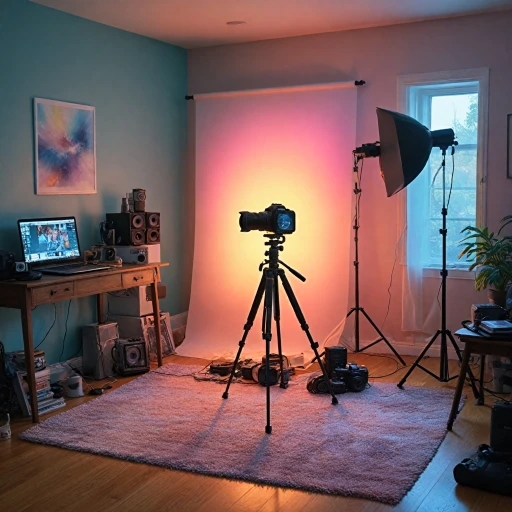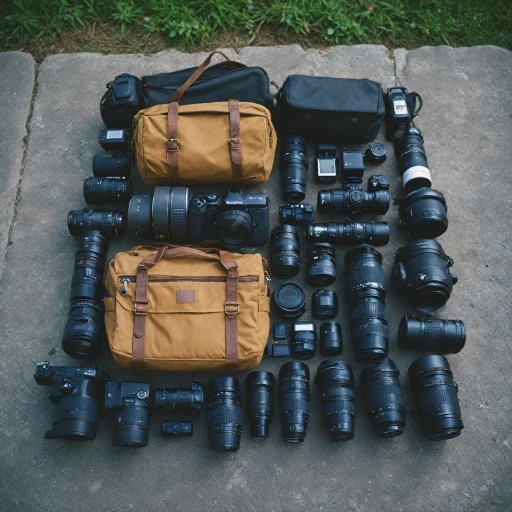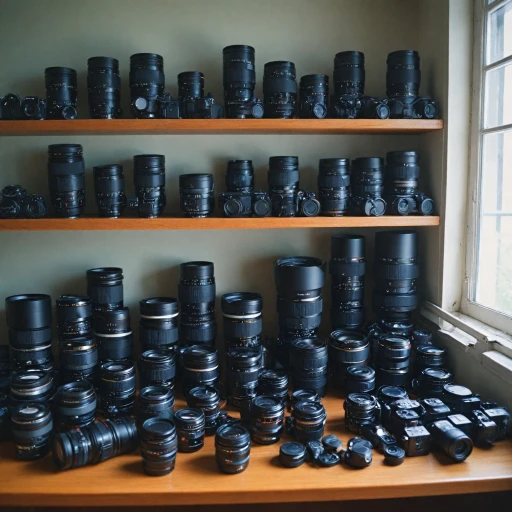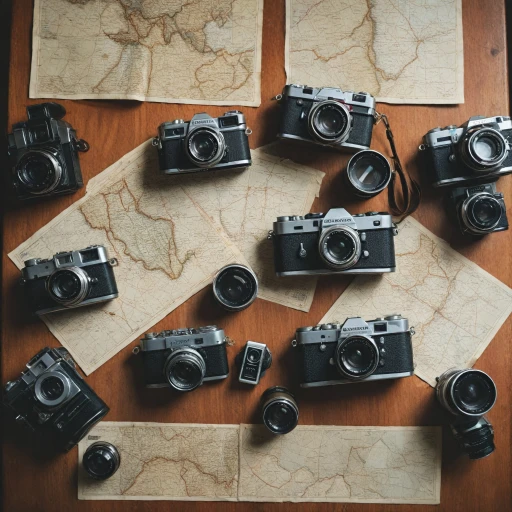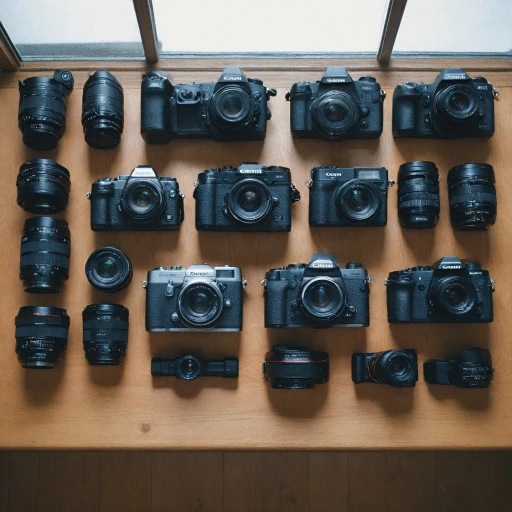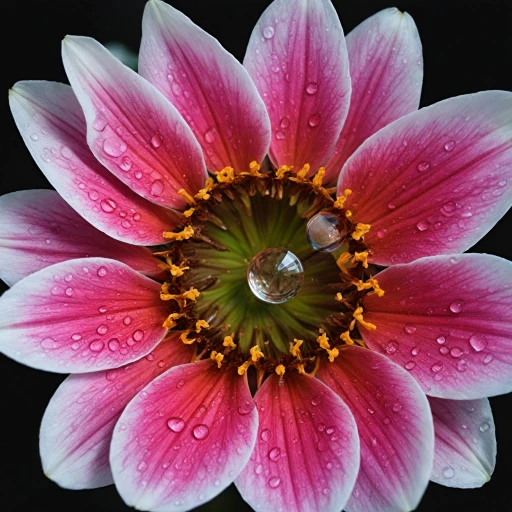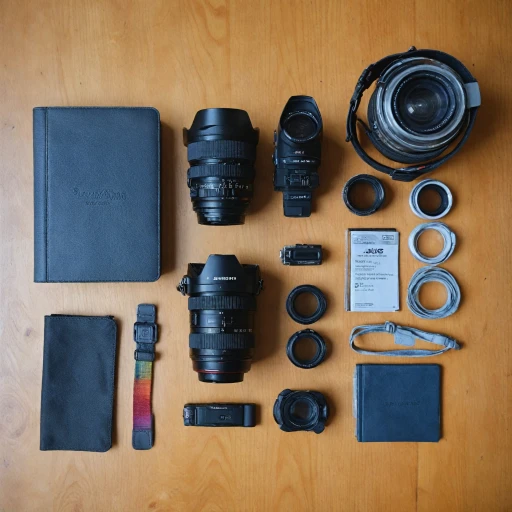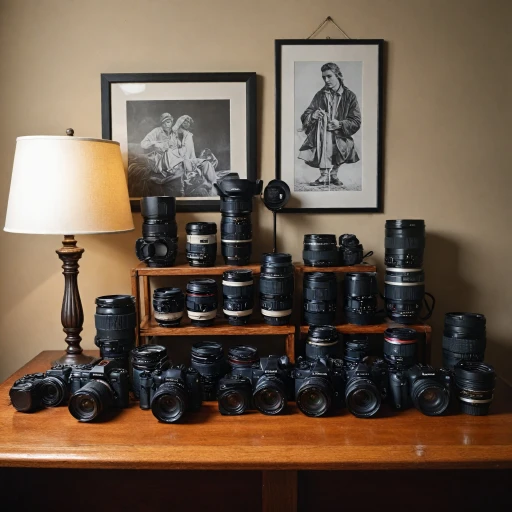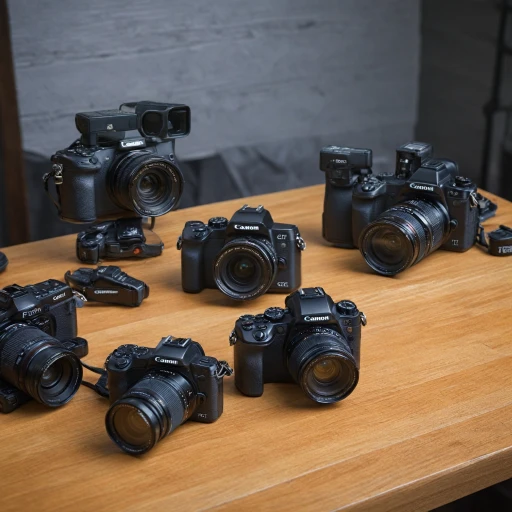
Understanding 35mm Film Cameras
Getting to Know 35mm Film Cameras
For those new to the world of film photography, understanding the basics of 35mm film cameras is essential. These cameras have been a staple in photography for decades, offering a unique experience that digital cameras can't quite replicate. The 35mm format refers to the width of the film used, which is the standard for most film cameras. This format is known for its versatility and the ability to produce high-quality images.
Why Choose a 35mm Film Camera?
Film cameras, especially 35mm, are great for beginners due to their simplicity and the tactile experience they offer. Unlike digital cameras, where you can instantly review your photos, film photography requires patience and skill. You'll need to consider factors like shutter speed, exposure, and focus before taking a shot. This process can help you develop a deeper understanding of photography fundamentals.
Exploring Different Types of 35mm Film Cameras
There are various types of 35mm film cameras available, each with its own set of features. Some popular options include point-and-shoot cameras, which are easy to use and perfect for beginners. These cameras often come with automatic settings, allowing you to focus on composition rather than technical details. On the other hand, SLR (Single-Lens Reflex) cameras offer more control over settings like shutter speed and exposure, making them ideal for those looking to delve deeper into film photography.
Brands to Consider
When it comes to choosing a 35mm film camera, several brands have stood the test of time. Canon, Nikon, and Olympus are renowned for their reliable and high-quality cameras. For instance, the Nikon cameras are known for their robust build and excellent lens options, while Olympus offers compact and user-friendly models like the Olympus Trip. Each brand has its own strengths, so it's worth exploring what suits your needs best.
Understanding Film Types
Another aspect to consider is the type of film you'll be using. There are various options, such as color negative, black and white, and slide film. Each type has its own characteristics and will affect the final look of your photos. Beginners might find color negative film to be the best choice due to its forgiving nature and wide availability.
As you embark on your journey into film photography, remember that the best film camera for you is one that fits your style and needs. Whether you're drawn to the simplicity of a point-and-shoot or the control of an SLR, there's a 35mm film camera out there waiting for you to explore its potential.
Top Features to Look for in a Beginner Film Camera
Key Elements to Consider
When diving into the realm of film photography, especially as a beginner, certain features in a film camera can make a considerable difference in your learning curve and overall experience. Here's what to focus on when selecting the ideal beginner camera.- Lens Compatibility: A versatile lens is crucial. Many beginner cameras come with a fixed lens, but it's beneficial to choose one with interchangeable lenses, like those from Canon or Nikon, for greater flexibility as your skills evolve.
- Shutter Speed and Exposure Control: A camera that offers manual control over shutter speed and exposure opens doors to creative possibilities in handling light. This aspect helps in capturing those perfect moments in varying lighting conditions.
- Autofocus and Focus Assist: Although manual focus has its charm, having a reliable autofocus system or focus assist can drastically help inexperienced photographers get sharp images effortlessly.
- Built-in Light Meter: A camera equipped with a light meter is exceptionally handy for assessing the lighting conditions. This feature assists in choosing the best exposure settings, vital for both black and white and color negative films.
- Size and Weight: For beginners, especially those just venturing out into the world of film photography, a lighter and more compact option like the Olympus Trip or half frame cameras can be quite convenient.
- Price Point: Entry-level cameras like the Pentax Espio are usually budget-friendly, making it easier to embark on your photography journey without heavy investment.
Comparing Popular 35mm Film Cameras for Beginners
Evaluating Popular 35mm Models for Novices
Getting into the world of film photography requires making the right choice when it comes to selecting your first camera. There are several renowned 35mm film cameras that beginners often look to as a starting point.- Canon AE-1 Program: Highly popular among beginners, the Canon AE-1 Program is prized for its auto-exposure feature, making it convenient for those not yet familiar with manual settings. It provides a great balance between manual control and automated assistance, which aids new photographers in capturing excellent photos.
- Nikon FM: Known for its robust build and manual features, the Nikon FM is ideal for beginners who want hands-on control over their photography experience. While it doesn't offer auto modes like some other models, its fully manual operation helps users understand core concepts like shutter speed and aperture from the ground up.
- Olympus Trip 35: If you're keen on a more straightforward, point-and-shoot experience, this camera won’t disappoint. It doesn’t require batteries, which simplifies the process of taking photos. Its versatility in accommodating both indoor and outdoor light conditions makes it especially attractive for novices.
- Pentax Espio Series: An excellent choice for those who are budget-conscious yet want some modern conveniences, the Pentax Espio cameras feature autofocus and varying levels of zoom, helping beginners ease into the world of shoot film.
Tips for Choosing Your First 35mm Film Camera
Consider Your Budget
Before diving into the world of film photography, it's important to set a budget. While some great beginner film cameras, like the Nikon FM10 or the Canon AE-1 Program, offer quality without breaking the bank, more unique options might require a bit more investment. It's beneficial to find the best balance for your needs, keeping in mind that the price of the camera isn't the only cost to consider. Roll film and developing fees should also be factored into your budget.
Determine the Camera Type
Deciding between fully manual cameras, automatic point-and-shoot models, or somewhere in between can guide your experience. If you're someone who enjoys full control over photos, a manual camera with adjustable shutter speed and exposure might be ideal. However, if convenience is key, a point shoot like the Olympus Trip 35 can offer ease and speed for on-the-go photography. It's worth noting how each type of camera will impact the feel and look of your photos.
Evaluate the Features
Key features should be examined when selecting a beginner camera. Look for a solid light meter feature to guide exposure settings. Cameras like the Pentax Espio might offer autofocus, which can greatly assist in capturing clear photos, especially for beginners. Lens options are also critical; interchangeable lenses on SLR cameras present more opportunities for creative shots. Consider if you'd prefer the richness of color negative film or the classic look of black and white depending on your usual subjects.
Assess Your Photography Needs
Where and how you plan to shoot film can heavily influence your decision. Will you be capturing landscapes, everyday moments, or dabbling in street photography? A versatile camera can adapt to various environments. The size and weight of the camera, such as those of a compact half frame model, might matter if portability is a priority. Deciding whether you prefer to shoot in low light with high ISO film or rely on natural light is crucial.
Try Before You Buy
If possible, get hands-on experience with a few options before purchasing. Visit camera stores offering used cameras or join photography meetups where members might share their gear. Feeling the camera in your hands and testing how it operates can be very insightful. Don't hesitate to shoot a few frames to see how the camera performs, as this can be a true test of what will work best for you as a film photography beginner.
Maintaining Your 35mm Film Camera
Keeping Your Camera in Prime Condition
Maintaining your 35mm film camera is crucial to ensure it continues delivering great photos. Regular upkeep helps prolong the life of both the camera and lens, keeping your foray into film photography smooth and enjoyable. Here are some essential tips for maintaining your camera:- Store Properly: Always store your film camera in a cool, dry place to protect it from dust, humidity, and temperature changes. Use a padded camera bag for added protection when on the go.
- Clean Lenses Regularly: Dust and smudges can affect the quality of your images. Clean your lenses with a microfiber cloth and lens cleaning solution. Be gentle to avoid scratching the glass.
- Check Shutter and Controls: Regularly inspect the shutter and other controls to make sure they’re functioning smoothly. The shutter speed and exposure settings should adjust properly to ensure the best shoot results.
- Inspect the Light Meter: Whether you own a Canon, Nikon, or Olympus model, always check that the light meter is working accurately. This feature is vital for determining the correct exposure, especially in varying light conditions.
- Film Loading and Unloading: When inserting a roll film, make sure to load it into the camera correctly to prevent jams. Gently handle film cameras when rewinding and removing the film to avoid tearing.
- Regular Servicing: Consider having your film camera serviced by a professional on a regular basis. They can perform a thorough inspection and perform any necessary repairs to keep your camera in optimal shape.
Exploring the World of Film Photography
Embracing the Timeless Art of Film Photography
Diving into the realm of film photography can be truly rewarding and offers a unique contrast to digital photography. Working with a camera that uses physical film, such as a classic Olympus Trip or a versatile Canon model, brings a different experience in capturing images. The tangible nature of film — with its rolls, exposure settings, and development process — offers a hands-on approach that many find invigorating.
The Appeal of Shooting with Film
One of the core attractions of film photography lies in its ability to foster patience and focus. You have a limited number of shots per roll, requiring more thoughtfulness in shooting photos. This often leads to better composition and more intentional use of camera settings like shutter speed and aperture. The anticipation that unfolds between capturing a photo and viewing the final image creates a thrilling and rewarding aspect of this art form.
Exploring Different Types of Films
Film photography offers the opportunity to experiment with a wide variety of film types. From black-and-white films that accentuate contrast to color negative films that enhance vibrant hues, the possibilities are vast. Additionally, using high-speed films can allow you to shoot in low-light conditions without compromising image quality.
Learning Through the Process
Engaging with film cameras such as the Nikon or Pentax Espio involves a learning curve that teaches fundamental photography principles. As a beginner, you become better acquainted with terms like ISO, light meters, and focal lengths. This hands-on experience translates well when transitioning to digital photography, providing a strong understanding of the basics.
Access to Affordable Gear
One of the great aspects of film photography is that it doesn’t have to break the bank. Many cameras, including some point shoot models and half frame options, are available at reasonable prices, making it accessible for beginners and enthusiasts alike. This lowers the barrier of entry and allows anyone interested to try their hand at shooting film.
Film photography, with its rich textures and distinct aesthetic, remains a cherished practice among photographers worldwide. Whether you're shooting with a classic Olympus or the best film camera that fits your budget, the experience is sure to enhance your appreciation for the craft.
